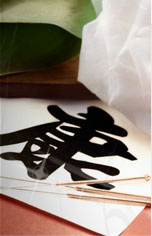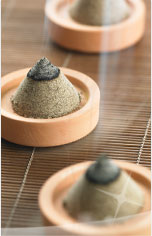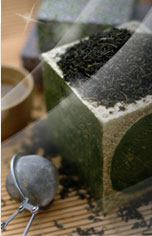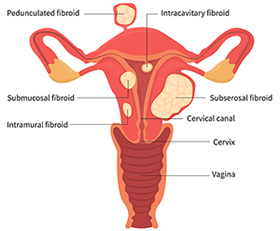Uterine Fibroids in TCM
In Traditional Chinese Medicine (TCM), uterine fibroids fall under abdominal masses (Zheng Jia). The disease category of abdominal masses (Zheng Jia) is divided into two sections, Qi masses and Blood masses
Zheng describes solid masses with defined physical form and fixed location, accompanied by pain in a specific location. Zheng masses are often referred to as Blood masses because the pathological changes have taken place in Zang (solid) organs and usually involve Blood.
Jia, on the other hand, describes masses without a distinct physical form, manifesting and dispersing without apparent pattern. Accompanying pain is not fixed in location. Jia masses are often referred to as Qi masses because the pathological changes have taken place in Fu (hollow) organs and involve Qi (the vital energy of the body).
The factors that may cause abdominal masses include:
- Emotional strainEmotional strain is the most common cause for the formation of the abdominal masses. Excessive or prolonged anger, frustration, resentment, and/or hatred can lead to stagnation of Qi and, in the long run, to stasis of Blood. The Liver channel plays an important role in the flow of Qi in the lower abdomen and, in women, Liver-Blood governs the circulation of the blood in this area.
- Improper dietDiet is another important etiological factor in the formation of abdominal masses. Irregular eating or excessive consumption of cold and raw foods may lead to the formation of cold in the lower abdomen. Coldness contracts and naturally interferes with the circulation of Qi and Blood. Excessive consumption of greasy foods, on the other hand, impairs the Spleen and may lead to the formation of dampness and phlegm, which can settle in the lower abdomen and bring about abdominal masses.
- External pathogenic factorsWhen pathogenic Cold, Dampness, or Heat attack the body, they may remain in the body for a long time and impair the functions of internal organs, causing Qi, Blood, and/or Phlegm Stagnation. Over a long time, abdominal masses are produced. The most important pathogenic factor is external Cold, which can invade the lower abdomen and impair the circulation of Blood, eventually leading to Blood stasis. External dampness may invade the channels of the legs and then creep up them to settle in the lower abdomen, whew it transforms into phlegm and may give rise to abdominal masses.
NOTE: The names of organs are capitalized when referring to the entire, functional organ systems in TCM perspective: Liver, Blood, etc. The names of organs are lower-cased when referring to the distinct, biomedical organs: liver, blood, etc.
|
TCM Treatment for Uterine Fibroids
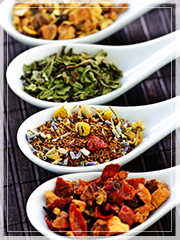
TCM treatment plan depends on the pattern differentiation diagnosis, based on the presenting signs and symptoms of individual patients and the underlying imbalances as the root of the conditions. Acupuncture, Chinese herbs, abdominal massage, topical herbal applications, dietary regulation, and exercise including Qi Gong are all useful in the treatment of fibroids.
In a pilot study published in 2002, researchers assigned a group of 37 women with uterine fibroids to 6 months of treatment with TCM, including weekly acupuncture treatment, herbal medicine, nutritional therapy, body therapy, and guided imagery training. The study results showed that fibroids shrank or stopped growing in 22 patients among the treatment group, and the symptoms of fibroids responded equally well to pharmacological or nonpharmacological therapies. All measures of patient satisfaction were significantly higher among the treatment group compared to those receiving conventional care.1
Acupuncture
Acupuncture promotes the release of endorphins and other chemicals in the body which help heal and manage pain. Acupuncture also enhances the immune and endocrine systems by stimulating the autonomic nervous system to help shrink the fibroids; restores renal and adrenal function to correct irregular cycles; and helps detoxify the liver to metabolize excess estrogen.
Acupuncture can successfully treat fibroid tumors as it addresses the root cause rather than the symptom. Acupuncture is primarily used to facilitate the circulation of Qi and Blood and to reduce the pain associated with fibroids. It is believed that when Qi and Blood are out of balance, blocked, or stagnated, illness and pain result. By placing fine sterile needles into the areas of disharmony, acupuncture will restore the balance and allow Qi and Blood to flow freely again, thereby alleviating the symptoms.
Each acupuncture point has its own therapeutic importance in the treatment of endometriosis, depending on the TCM diagnosis of the patients. Besides the acupuncture points on the lower abdomen, the points on the hands, arms, legs, feet, and back can be used in the treatment of fibroids.
Chinese Herbal Medicine
For most gynecological disorders, including unterine fibroids, Chinese herbal medicines are recommended to correct imbalance of the internal organs and to increase the effect of acupuncture treatments. The basic principle of formulating Chinese herbal medicine for uterine fibroids are; invigorating Qi and Blood, resolving Phlegm, and softening the masses.
The Chinese herbs for this purpose are generally called 'attacking herbs'. The most commonly used attacking herbs are: E Zhu , San Leng, Shi Jian Chuan, Ban Zhi Lian, Qian Niu Zi, Shan Ci Gu, Hai Zao, and Xia Ku Cao. Different herbs will be added to accomplish a reduction of fibroids according to the constitution and presenting signs and symptoms of each patient.
Nutritional Advice
Nutritional therapy can be used to avoid developing uterine fibroids and to prevent fibroid tumors from getting bigger. The patient should begin a hormone-balancing diet, involving foods with low inflammation effects, low acidity, and a low glycemic load.
What to Eat
- Seaweeds
In TCM, seaweeds such as Kun Bu and Hai Zao are used to promote Blood circulation and eliminate Phlegm stasis. In Korea, seaweeds are known as ‘female’s food’ and often consumed before and after menstruation or childbirth. In recent researches have shown that some forms of seaweed have excellent nutritional qualities, and brown seaweed in particular, can prevent the formation of blood clots, lower cholesterol and halt the growth of tumors. In addition, when consumed daily, seaweed has advantages beyond ridding the body of heavy metal stores. Seaweeds can be a powerful ally for healing and lessening the severity of fibroids.2
- Cold-water fish
Cold-water oily fish such as salmon, herring, mackerel, anchovies and sardines are good source of omega-3 and omega-6 fatty acids. Unlike many 'Omega-3 products' on the market which contain only α-linolenic acid (ALA), these fishes have eicosapentaenoic acid (EPA) and docosahexaenoic acid (DHA) as well as α-linolenic acid (ALA). Omega-3 fatty acids play an important role in nutritional treatment for uterine fibroids. Along with omega-6 fatty acids, EPA and DHA stimulate blood circulation, increase the breakdown of fibrin (a compound involved in clot and scar formation), reduce blood triglyceride levels, and have anti-inflammatory effect on the human body.3
- Legumes
Beans, peas, lentils, and edamame have hormone-modulating flavonoids. Legumes are naturally low in fat and high in dietary fiber. They also are high in folate, phosphorus, potassium, iron, zinc, calcium, and selenium. Legumes have many of the B vitamins and are rich in anti-oxidants, which can prevent the cell damage. Many kinds of beans, including soybeans, are rich in saponins, an anti-inflammatory compound which helps strengthen the immune system.
- Fruits, vegetables, seeds, and nuts containing omega-3 fatty acids
Fruits, vegetables, seeds and nuts are another source of omega-3 fatty acids. Flaxseed oil, chia, kiwi, black raspberry, lingonberry perilla (Shiso), camelina (Gold of pleasure), hemp seeds, pumpkin seeds, butternuts, walnuts, pecans, and hazelnuts are examples of those that contain omega-3 fatty acids.
- Cruciferous vegetables
Cruciferous vegetables such as broccoli, Brussels sprouts, cabbage, cauliflower, Chinese cabbage, collards, kale, mustard, radish, rutabaga, and turnip are high in vitamin C and soluble fiber and contain multiple nutrients with potent anti-tumor properties. One characteristic that sets cruciferous vegetables apart from other vegetables is their high glucosinolate content. Some glucosinolate hydrolysis products may alter the metabolism or activity of hormones like estrogen in ways that inhibit the development of hormone-sensitive cancers.
- Green tea
Drinking green tea could help get rid of fibroids or manage their symptoms. A 2013 study found that the flavanol EGCG, found in green tea, reduced the size of uterine fibroids and improved symptoms of anemia and blood loss.4
What to Avoid
- Sweets and other foods with high glycemic index
These foods will raise insulin levels, increase estrogen dominance, and also support fibroid growth. It is also imperative to eat a breakfast containing good quality protein, fats, and carbohydrates in combination to avoid hypoglycemic stress–induced cortisol and epinephrine elevations, which will deplete lean muscle and increase the tendency for insulin resistance via gluconeogenesis.
- Gluten grains
Especially wheat, rye, and barley contain genetically engineered gluten that is much stronger than that in the more ancient gluten grains such as spelt. These grains can increase estrogens via the cytochrome P450 3A4 enzyme system and can also affect thyroid hormone.5
- Alcohol
Alcohol is okay if consumed in moderation. Studies show that women consuming more than five alcoholic drinks per week have a higher risk of breast cancer. This increase is probably because of the effect of alcohol on detoxification of estrogens.
- Caffeine
Caffeine can increase the production of estrogen. Caffeine also interferes with the liver’s ability to metabolize excessive estrogen in the body, causing an increase in serum level estrogen. Organic coffee in moderation (1 to 2 cups per day) is safe.
|

